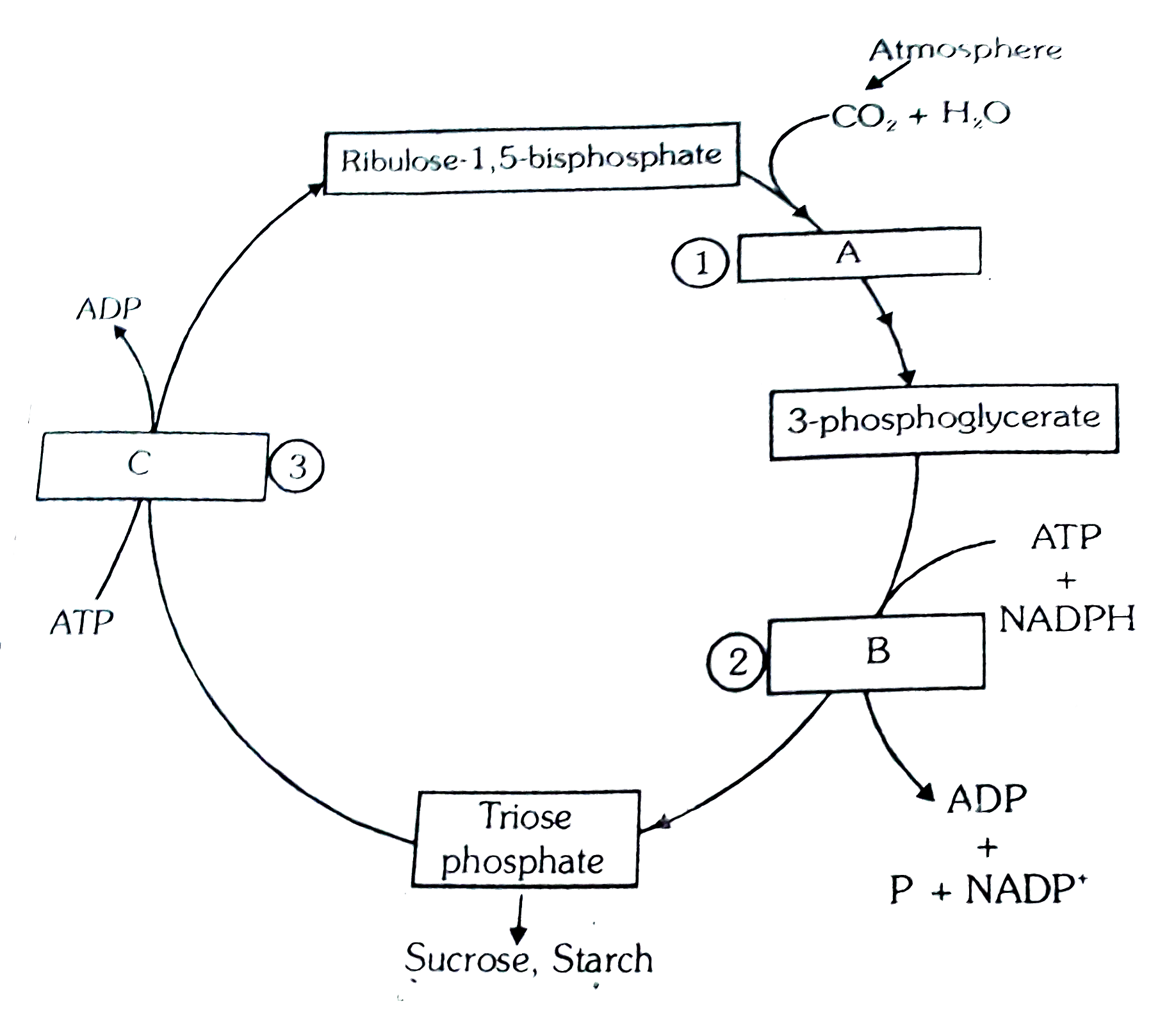Observe the given figure of Calvin cycle and ifnd the name of steps and number of ATP and NADPH utilised in them for one molecule of CO2

The correct Answer is:StepsATP and NADPHA=carboxylationNilB=Reduction2ATP and 2NADPHC=Regeneration1ATP
Step by step video & image solution for Observe the given figure of Calvin cycle and ifnd the name of steps and number of ATP and NADPH utilised in them for one molecule of CO_(2) by Biology experts to help you in doubts & scoring excellent marks in Class 12 exams.
Updated on:21/07/2023Similar Questions
3CO2+9ATP+6NADPH+ water → Glyceraldehyde 3-phosphate +9ADP+6NADP+8Pi.
Analyse the above reaction and answer the following question.
(a) How many molecules of ATP and NADPH are required to fix one molecule of CO2 ?
(b) Where in the chloroplast does this process occur ?
View SolutionWhat is the net consumpition of ATP and NADPH for every CO2 molecule fixed in C4 plants ?
View Solution
Knowledge Check
The total number of ATP and NADPH required to fix six molecules of CO2 in C3 plants are
AATP-12, NADPH-12BATP-5, NADPH-3CATP-18, NADPH-12DATP-12, NADPH-18How many ATP and NADPH2 molecules are used for fixing one molecule of CO2?
AThree and two respectivelyBThree eachCTwo eachDTwo and three respectivelyIn C4 plants , numbers of ATP and NADPH molecules required to fiz 2 molecules of CO2 are respectively
A6 & 10B10 & 6C4 & 10D10 & 4
How many turns of Calvin cycle must occur if 9ATP and 6NADPH+H+ are utilized giving a net gain of one molecule of PGAL?
View SolutionIn Calvin cycle, to form one molecule of glucose how many number of ATP and NADPH molecules are utilized?
View SolutionDuring Calvin cycle the total number of CO2 ATP and NADPH molecules utilised and glucose, ADP and NADP molecules generated is
View SolutionFor every CO2 molecule entering the calvin cycle, the number of ATP and NADPH required is
View SolutionIn the Calvin cycle for the fixation of molecules of CO2 how many ATP and NADPH are required in the reduction step ?
View Solution
